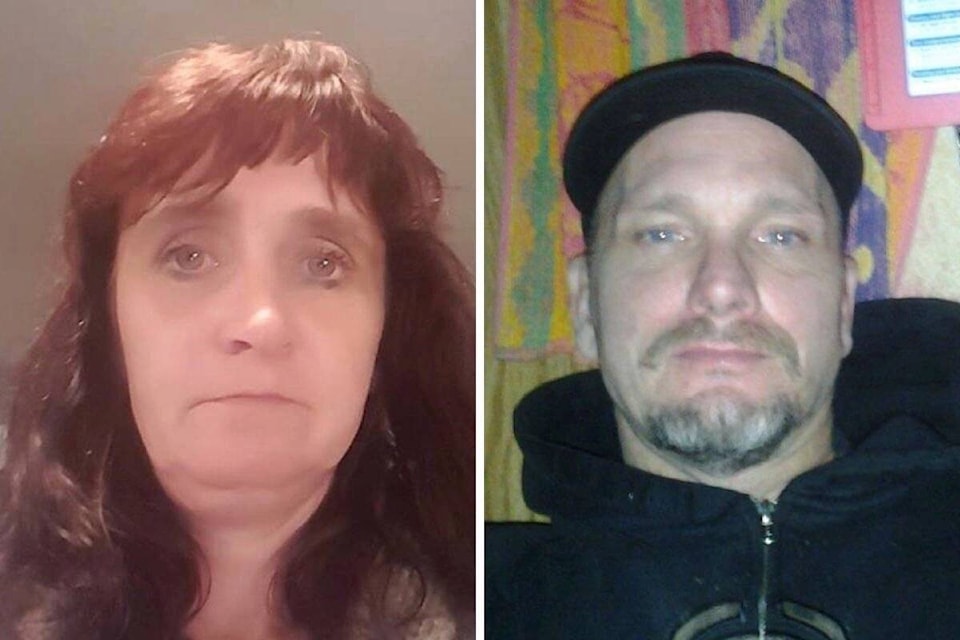Nothing could be done to save Nona McEwan’s life, an ER physician at Royal Columbian Hospital testified Monday.
“No, unfortunately,” Dr. Pearlly Ng replied, asked if her condition was survivable.
Ng was called as a witness at a coroner’s inquest into the deaths of Randy Crosson, 48, and Nona McEwan, 45, both killed by police bullets during a March 29, 2019 hostage-taking in the Whalley house McEwan rented. Crosson used McEwan as a human shield, the inquest heard.
“During the transportation she unfortunately lost her vital signs,” Ng said. The paramedics had started CPR and notified the hospital they were 10 minutes away. Ng activated the trauma team and contacted the blood bank to initiate the “massive transfusion protocol, anticipating that I would receive a patient who had sustained a large amount of blood loss.”
When McEwan arrived, they were unable to regain a pulse, and her time of death was declared at 8:18 a.m. She’d lost consciousness at 7:33 a.m. She was shot at 7:25 a.m., the inquest heard.
“I think they did everything they could on scene,” Ng said, “based on the information I was provided.”
Royal Columbian, at 330 East Columbia St. in New Westminster, is a Level 1 trauma centre, Ng noted. “So we regularly see people that have sustained gunshot wounds.”
READ ALSO: ‘Falling like dominoes’: ERT officers expected to die in Surrey hostage-taking
READ ALSO: Dozens’ of gunshots fired in Surrey hostage stand-off, inquest hears
READ ALSO: In the line of fire: Armoured vehicle driver testifies at inquest
McEwan was shot twice, in her right arm and right abdomen.
Coroner Margaret Janzen is presiding over the inquest in Burnaby, at Coroners’ Court. It’s expected to run for two weeks, with a jury of four women and a man hearing testimony.
A Surrey-based police watchdog — the Independent Investigations Office — in 2020 found the ERT blameless in the shooting deaths of McEwan and Crosson, whom authorities say was holding McEwan against her will in her rented home. The standoff saw roughly two dozen police vehicles, as well as an armoured vehicle, surround a home in a cul-de-sac near 132A Street and 100A Avenue.
McEwan was killed when she was struck by two police bullets as ERT officers fired on Crosson, who held a large knife to her throat and had “what appeared to be” a gun in his hand. Forensic police later found a “realistic-looking” replica pistol between the bed and the wall. Crosson was pronounced dead at the scene and McEwan died on the way to hospital.
Cpl. Luke Johnston, a “breacher” with the Emergency Response Team since 2011, also testified on Monday. He said he’d been deployed 500 “or so” times — about 50 per year — on ERT calls before March 29, 2019. He set the charge to blow open the bedroom door to get to the couple. The risk assessment, he said, “was extreme.”
“It’s about as high as I think I could go in my risk assessment in my career so far.”
Johnston said he fired four rounds at the centre of Crosson’s abdomen.
“There’s a initial volley of gunfire that I hear,” he said. “I’m not sure if he’s firing back at us, perhaps firing a number of rounds at us, I’m not sure if some or our guys are down at this point, but there’s this initial volley.”
READ ALSO: Police officers recount final minutes of fatal hostage-taking in Surrey
READ ALSO: Lethal force the only option in Surrey hostage-taking, inquest hears
READ ALSO: Coroner’s inquest set for 2019 Surrey police-standoff shooting deaths
Crosson was on the bed, and in his left hand was a pistol with a closed grip on it.
“I see Miss McEwan, who is there, and this is all in close proximity, but then I say something to the effect of let’s get her out. Like let’s get her out.”
She had “kind of a startled look on her face,” Johnston said. “Like a look of shock. We moved her from there, I think I grabbed one of her legs, but we moved her to the kitchen area,” where the medical assessment began.”
Johnston was questioned about sympathetic fire, also known as “contagion” fire, where under high stress police start shooting because other police are.
Asked if that’s what happened here, Johnston replied no. “I perceived Mr. Crosson to, or the suspect in this case, to essentially have a firearm in their hand, and based on the movement of the hand and the gun, my interpretation was, or could be, essentially cause us harm at any point in time, and that’s how I essentially formed my opinion and made the decision to engage with him at that point in time.”
READ ALSO: Man shot by police ‘terrorized’ girlfriend’s neighbour, inquest hears
READ ALSO: ‘The hardest call I ever did’: ERT commander testifies at inquest
READ ALSO: “They brought a tank, that’s pretty scary,’ coroner’s inquest told
The inquest continues.
